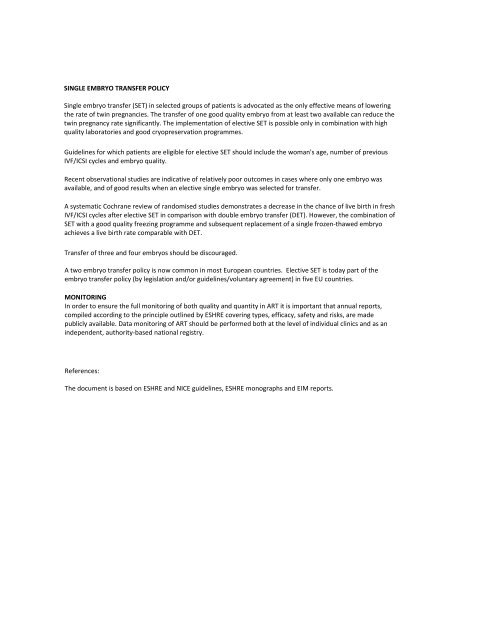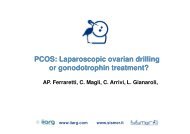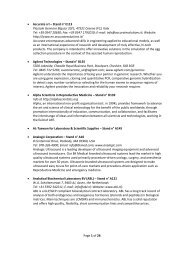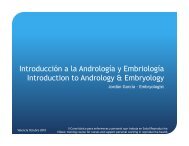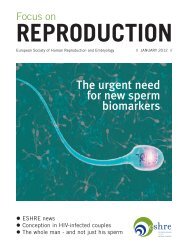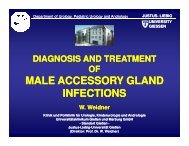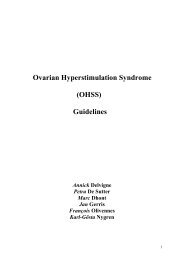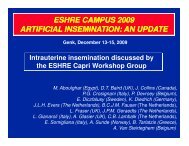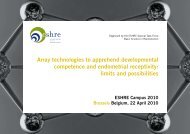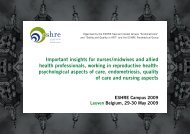Good Clinical Treatment in Assisted Reproduction - An ESHRE ...
Good Clinical Treatment in Assisted Reproduction - An ESHRE ...
Good Clinical Treatment in Assisted Reproduction - An ESHRE ...
You also want an ePaper? Increase the reach of your titles
YUMPU automatically turns print PDFs into web optimized ePapers that Google loves.
SINGLE EMBRYO TRANSFER POLICYS<strong>in</strong>gle embryo transfer (SET) <strong>in</strong> selected groups of patients is advocated as the only effective means of lower<strong>in</strong>gthe rate of tw<strong>in</strong> pregnancies. The transfer of one good quality embryo from at least two available can reduce thetw<strong>in</strong> pregnancy rate significantly. The implementation of elective SET is possible only <strong>in</strong> comb<strong>in</strong>ation with highquality laboratories and good cryopreservation programmes.Guidel<strong>in</strong>es for which patients are eligible for elective SET should <strong>in</strong>clude the woman's age, number of previousIVF/ICSI cycles and embryo quality.Recent observational studies are <strong>in</strong>dicative of relatively poor outcomes <strong>in</strong> cases where only one embryo wasavailable, and of good results when an elective s<strong>in</strong>gle embryo was selected for transfer.A systematic Cochrane review of randomised studies demonstrates a decrease <strong>in</strong> the chance of live birth <strong>in</strong> freshIVF/ICSI cycles after elective SET <strong>in</strong> comparison with double embryo transfer (DET). However, the comb<strong>in</strong>ation ofSET with a good quality freez<strong>in</strong>g programme and subsequent replacement of a s<strong>in</strong>gle frozen‐thawed embryoachieves a live birth rate comparable with DET.Transfer of three and four embryos should be discouraged.A two embryo transfer policy is now common <strong>in</strong> most European countries. Elective SET is today part of theembryo transfer policy (by legislation and/or guidel<strong>in</strong>es/voluntary agreement) <strong>in</strong> five EU countries.MONITORINGIn order to ensure the full monitor<strong>in</strong>g of both quality and quantity <strong>in</strong> ART it is important that annual reports,compiled accord<strong>in</strong>g to the pr<strong>in</strong>ciple outl<strong>in</strong>ed by <strong>ESHRE</strong> cover<strong>in</strong>g types, efficacy, safety and risks, are madepublicly available. Data monitor<strong>in</strong>g of ART should be performed both at the level of <strong>in</strong>dividual cl<strong>in</strong>ics and as an<strong>in</strong>dependent, authority‐based national registry.References:The document is based on <strong>ESHRE</strong> and NICE guidel<strong>in</strong>es, <strong>ESHRE</strong> monographs and EIM reports.


